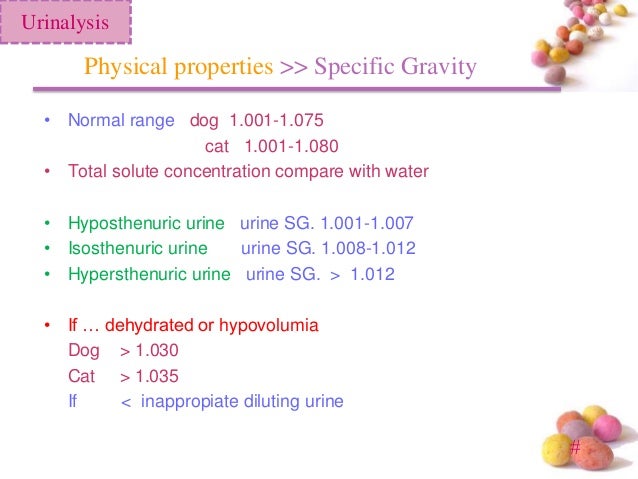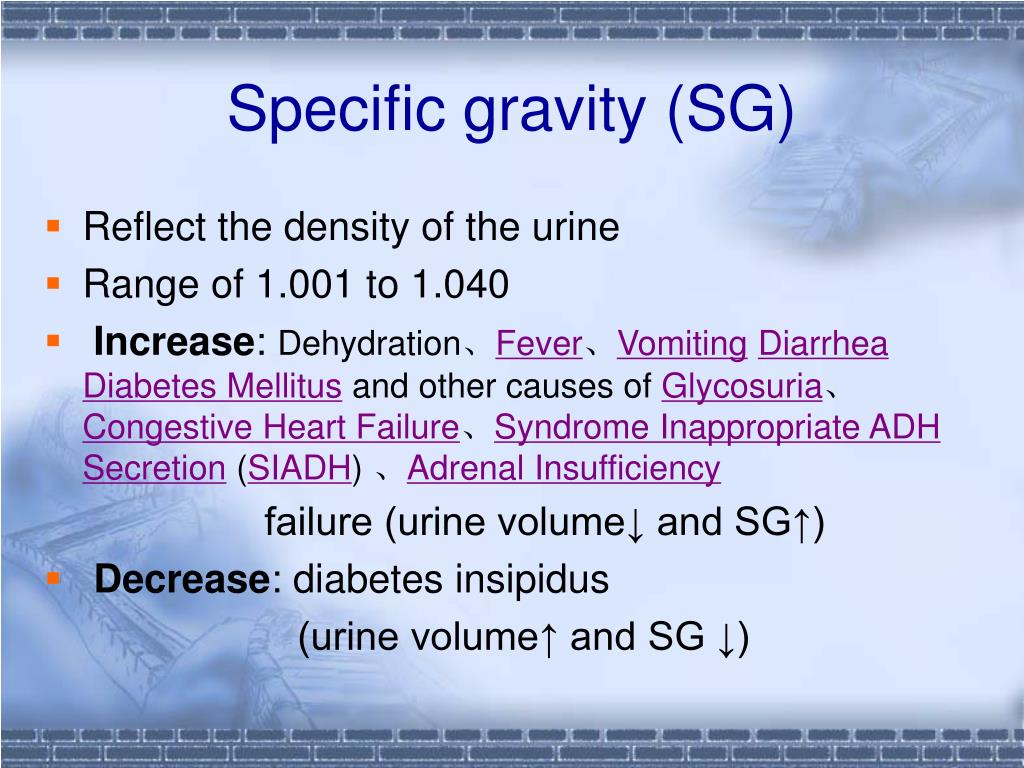
A relationship was considered significant at a value of P < 0.05 as determined by use of linear regression analysis. The line of values with no difference is indicated (dotted line). Each circle represents results for a single sample, and the line represents the linear regression line. The results from these tests can help your healthcare provider make a more accurate diagnosis.Graphs of the relationship between the USG of unaltered pooled dog urine and the difference in USG attributable to the addition of glucose to create urine samples with glucose concentrations of 50 (A), 150 (B), 300 (C), 600 (D), 1,200 (E), and 2,400 (F) mg/dL. Other types of urine tests include urine pH tests, hemoglobin tests, and ketone tests.

And glucose can point to glucose intolerance or diabetes. White blood cells can indicate an infection.

Osmolality tests are sometimes used to evaluate how the kidneys dilute and concentrate urine, with osmolality being the index of a concentration. Home tests are more susceptible to contamination.Īnother benefit to taking the test at your healthcare provider’s office is that they can send the sample to the lab for more detailed testing and analysis.
#URINE SPECIFIC GRAVITY RANGE PROFESSIONAL#
While there are home tests, the results won’t be as accurate as those conducted by a professional in a sterile environment. This is more reliable than the dipstick method, in which a stick is placed in the urine to measure how much it sinks or floats. This will ensure the best results.Ī lab technician will use a refractometer to project light into the sample and determine its density. Your healthcare provider will send the urine sample to a laboratory while it’s fresh.

This is known as the clean-catch (or midstream) method. Urinate into the cup until you have a large enough sample, and then finish urinating into the toilet.

Urinate a small amount, and then place the cup under your urine stream. This will reduce the likelihood that bacteria will contaminate the sample. Your healthcare provider will give you a cup to collect a urine sample.įor the best sample, you should use an antibacterial wipe to clean the area around your urethra. The best time to get a sample is first thing in the morning, when your urine is the most concentrated. A sample for a urine specific gravity test contains at least 1 to 2 ounces of urine.


 0 kommentar(er)
0 kommentar(er)
